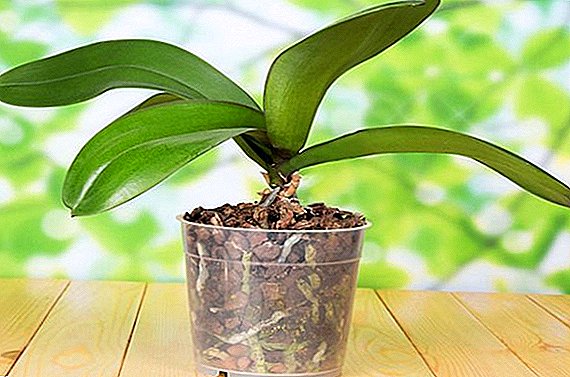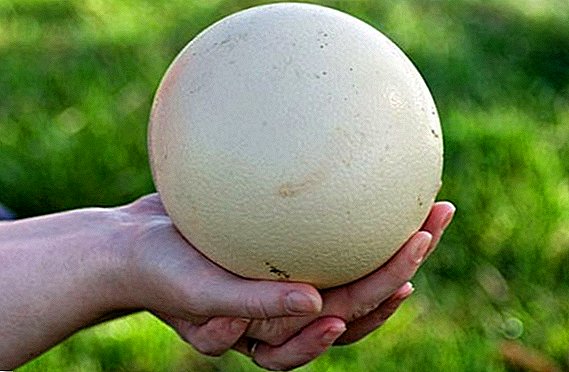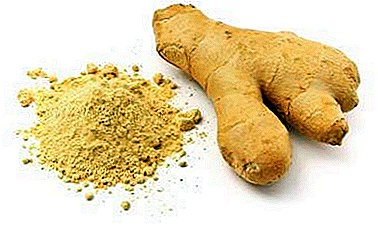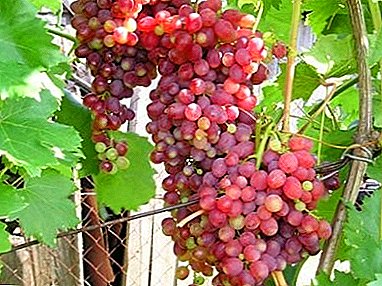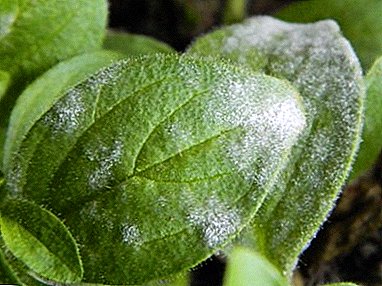
Petunia is a bright, beautiful and long flowering plant. These flowers are perfect not only for decorating flowerbeds in garden plots, but also for urban balconies. With a little care and timely dressing petunia is able to delight with its flowering from the beginning of summer to late autumn. But, despite its unpretentiousness, this flower is still sometimes affected by disease. One of the most dangerous diseases for petunias is powdery mildew.
What it is?
Mildew is a fungal disease that affects plants.. The disease is caused by powdery-mildew fungi, parasitic on the leaves and capable of causing the death of the plant. It is not selective in its preferences and can affect a large number of plants, from ornamental to vegetable and fruit crops.
A photo
Then you can see the photo of powdery mildew on petunia:



Causes
Usually, the disease develops under concomitant weather conditions and improper care of plants. The fungus itself lives in the soil. It does not manifest itself in warm and dry weather, if the rules of plant care are carefully followed. But if conditions are unfavorable, whole fungal colonies develop, which very quickly infect the plant.
Fungi - parasites feed on the sap of the plant, leaving it with no nutrients. The causes of the disease usually become:

- Cool weather and high humidity. If there is also a shortage of sunlight, the conditions for healthy plant growth become extremely unfavorable.
- High nitrogen content in the soil.
- Frequent planting of plants, therefore, insufficient air circulation between them.
- Irrigation mode is not observed. Do not water the plants too often. It is also unacceptable to flood the plant heavily after a long drought. These actions destroy the plant's immunity, and, as you know, diseases most often affect weakened planting.
When found on the site of plants affected by powdery mildew, it is important to remember that one way of spreading the disease is to carry the spores through the air.
When caring for the plants, it is enough to touch the diseased plant and then touch the healthy one - infection with powdery mildew occurs.
How to determine the disease?
Powdery mildew on the leaves of petunia appears white bloom. At the initial stage of the disease, it is more likely that someone lightly powdered the leaves with flour or powdered sugar. But on the contrary, the disease is rapidly moving to flowers and buds.
Powdery mildew progresses very quickly, the infected leaves turn yellow and fall off. Even if the plant has time to grow new leaves, they have a twisted and extremely painful look. In just two days, the disease can affect the entire landing of petunias. If the treatment is late, the plant dies.
How to fight?
How to get rid of the disease? As soon as white bloom is found on the leaves of petunia, it is necessary to immediately begin treatment of the plant:

- The first step is to cut off the affected areas and burn them so that the infection does not spread further.
- Under the plant it is necessary to cut off the top layer of soil and replace it with a new one, impregnated with antifungal agent.
- The plant itself is sprayed with a fungicide.
Folk remedies are also widely used in the fight against powdery mildew. Before using the solutions, the diseased parts of the plant are also removed here in the first place.
In spite of the fact that spraying is not welcome during infection with powdery mildew, before widespread fungicidal preparations, gardeners successfully fought against the disease with the help of spraying:
- Copper sulfate treatment. For 5 liters of water, take 5 g of copper sulphate, add 50 g of soap and mix thoroughly. The resulting solution to process the plant once a week for a month.
- Potassium permanganate. In 10 liters of water, dissolve about 3 g of manganese, process the plant 3-4 times every 5 days with this solution.
- Soda Ash. Prepare soda solution: for 5 liters of hot water, take 2 tablespoons of soda and 1 tablespoon of planed laundry soap. Petunia bushes spray warm solution 3 times in 7 days.
- Dairy whey. Dilute 1 liter of serum in 10 liters of water and spray the plants with this solution.
- Mustard powder. Dissolve 2 tablespoons of mustard powder in 10 liters of boiled water. Cool solution can be watered and sprayed with petunias.
They are most active in the fight against powdery mildew and are able to suppress the spread of the disease at the cellular level. Treat your petunias in the evening and windless, dry weather.
What to process: drugs

- Widely known in the fight against powdery mildew fungicidal drug "Topaz", its average price is 75 rubles.
- Well proven drug "Is fast", its approximate price is 25 rubles.
- Popular with gardeners for the treatment of powdery mildew "Fundazole". Available in powder form, the price is about 40 rubles.
- "Vitaros"- Another popular fungicide to combat powdery mildew. Approximate price of 50 - 60 rubles.
Preventive measures
The best way to combat powdery mildew is to prevent the disease. Of course, to avoid problems, you can plant varieties of petunias that are resistant to fungal diseases. But if you do not adhere to elementary rules in the care of plants, then plants with genetic immunity will not resist disease. Therefore, first of all, try to provide the plants with proper care:
- Water the petunias only after making sure that the earth lump is dry enough, but not dry. Use warm, settled water to water the plants.
- Planting must be periodically thinned, removing, first of all, sluggish shoots.
- When feeding petunias, keep proportions and do not get carried away with nitrogen-based fertilizers.
- Give preference to potassium-phosphorus mixtures, they contribute to the development of immunity of petunias.
- Every day, inspect the landings of petunias.
- Conduct periodic spraying of plants with biofungicide. You can use herbal medicine or pseudobacterin.
By observing these simple rules, you can give the plants a long life, and give yourself the joy of the positive results of your work.
It is better to prevent the disease than to fight it. Do not forget about the prevention of plant diseases, and then you do not have to use fungicidal preparations on your plots. Compliance with agricultural technology will help, if not completely avoid disease, then reduce their likelihood by 90% exactly.
Experienced gardeners know that most diseases develop on plants due to inadequate care. Be attentive to your plantings, take quite a bit of time for daily inspection of plants, and they will thank you for their luxuriant bloom, becoming a true decoration for flowerbeds and balconies.



